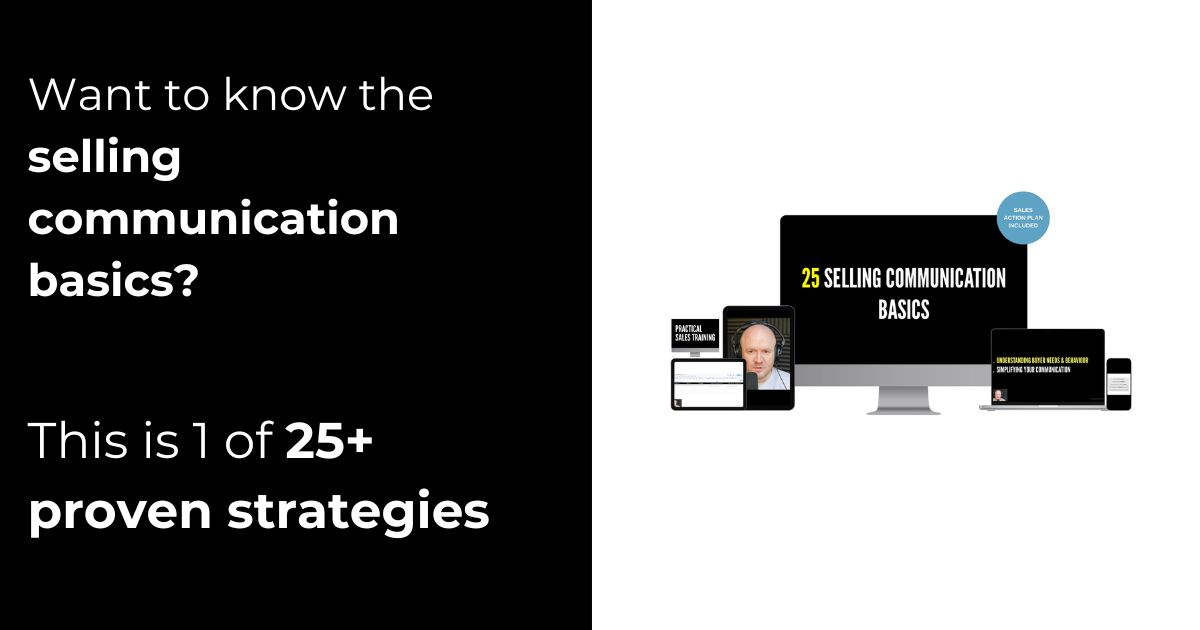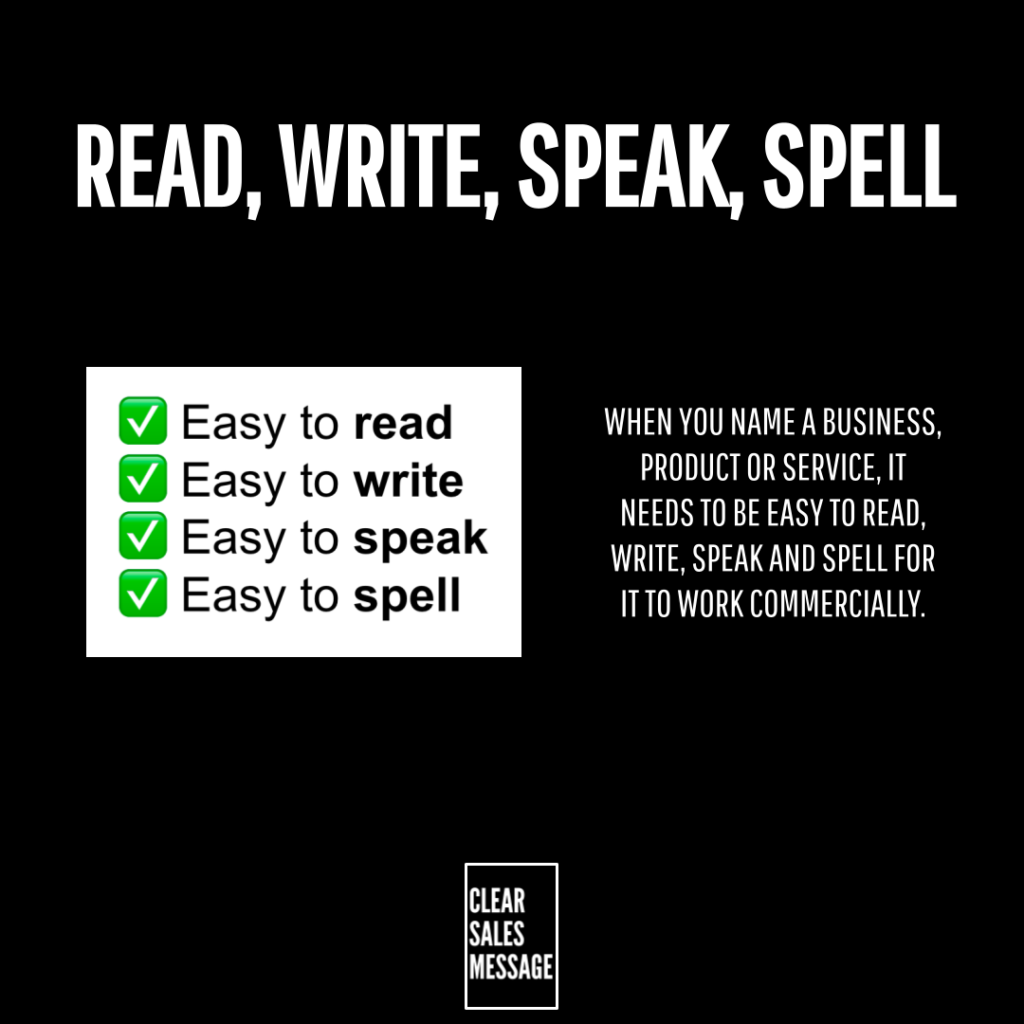Practical Sales Training™ > Selling Communication Basics > Read, Write, Speak, Spell
What is it?
When it comes to naming your business, product or service, it’s important that the name you use is easy to read, write, speak and spell.
Why does it work?
It works because every part of your communication needs to be mindful of the attention span and average reading age of the average person in the street. Whilst we may have an avatar or understanding of who we are selling to and what they “should” know, it’s important to simplify our communication so anyone could understand it. This means no jargon, no assumption and no excuses!
How can you use it?
To ensure your name is as CLEAR as possible, we simply need to adhere to the following criteria:
1 – Easy to Read
In the UK, the average reading age is approximately 9 years of age. This means we need to stick with simple language, shorter words and fewer syllables.
The longer and more complex the name – the less chance it will be remembered or understood.
2 – Easy to Write
As well as an average reading age of 9, your audience has an attention span of circa 8 seconds. This means that if you want them to remember it, it needs to be easy to write (into a browser or Google for example)
This means again, the name should comprise the most basic, simple, obvious language where possible. Fewer syllables and simpler concepts = more chance of being remembered and understood.
3 – Easy to Speak
This is becoming more and more important.
It seems obvious, but how you pronounce the name matters, and if you don’t believe me check out these brand names you are almost certainly mis-pronouncing.
With voice search on the rise (“Hey Google – What’s a Clear Sales Message?”) and the possibility of viral sharing amongst our networks – it’s important your name is easy to speak so it doesn’t suffer the Chinese Whisper Effect and become a Purple Monkey Dishwasher.
4 – Easy to Spell
Avoid difficult to spell words or those which are misheard. Can I spell by guessing or do I need to check? If I need to check the spelling or get it wrong, then it’s a barrier to me remembering you, Googling you or doing business with you.
Hypothetical Example:
A tech startup wants to name its new productivity app. The founder loves the name “Xynqrofy” because it sounds unique and “modern.”
However, when tested with potential users, people struggle to:
-
Read it: “How do you even say that?”
-
Write it: Nobody can remember the spelling.
-
Speak it: It gets mispronounced in conversations.
-
Spell it: Google autocorrects it to something else entirely.
Instead, they rebrand the app to “FocusFlow” – a name that is easy to read, write, speak, and spell. It’s memorable, works with voice search, and clearly communicates the purpose of the product.
See also:



